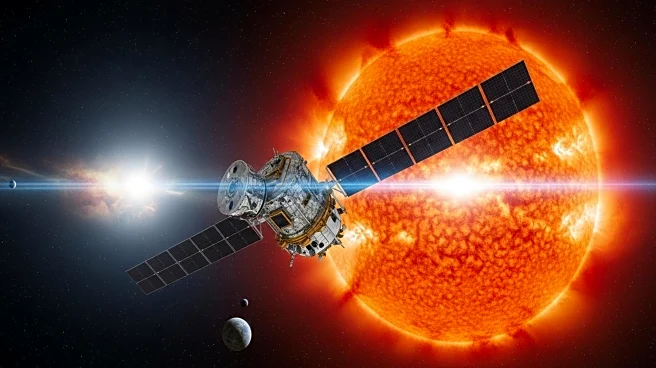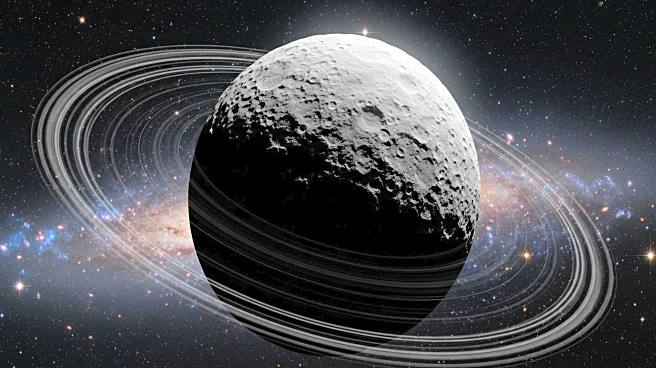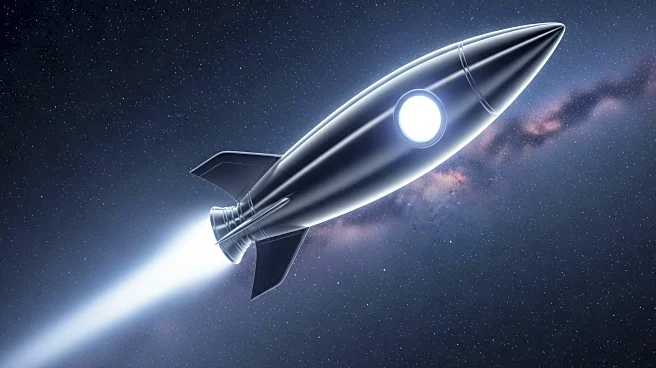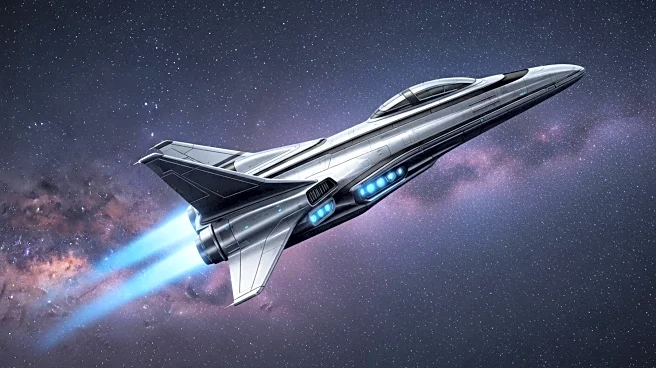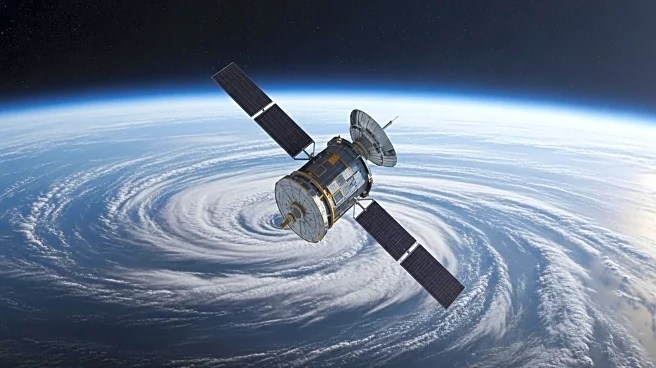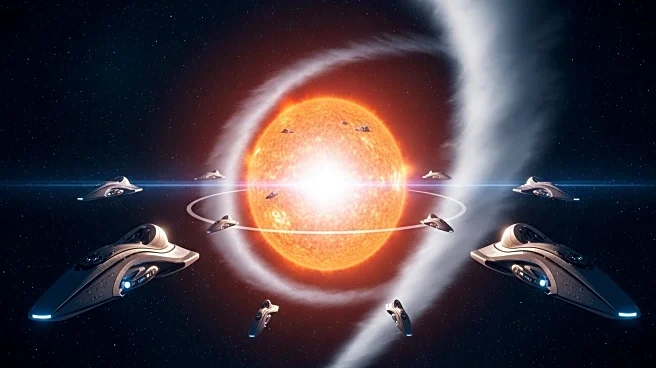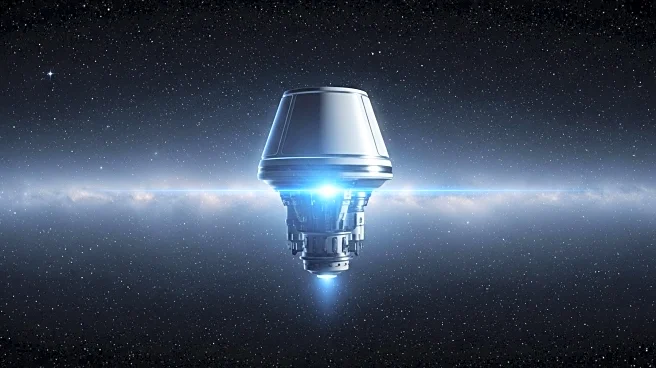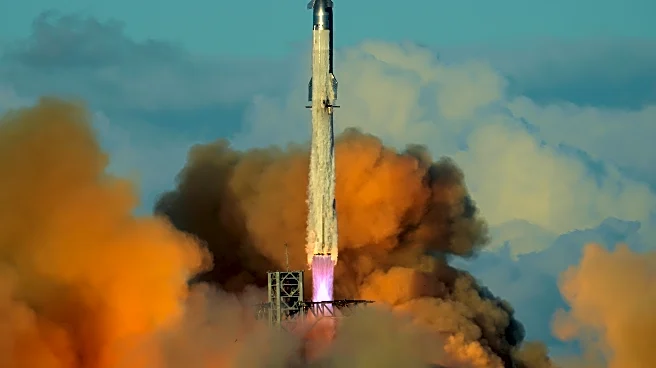What's Happening?
NASA is preparing to launch the Solar Polar-orbit Observatory (SPO) in January 2029, a mission designed to explore the Sun's polar regions, which remain largely uncharted. The SPO will utilize a Jupiter gravity assist to achieve a high-inclination orbit, allowing it to capture unprecedented images and data from the Sun's poles. This mission aims to address key questions in solar physics, such as the operation of the solar dynamo, the origins of the fast solar wind, and the propagation of space weather events. The SPO will carry a suite of remote-sensing and in-situ instruments, including the Magnetic and Helioseismic Imager and the Extreme Ultraviolet Telescope, to provide a comprehensive view of the Sun's poles and their influence on the solar system.
Why It's Important?
The exploration of the Sun's poles is crucial for understanding the solar magnetic cycle and improving space weather forecasts. The poles play a significant role in shaping the solar magnetic structure and influencing the fast solar wind, which affects conditions in interplanetary space. By providing detailed observations of these regions, the SPO mission could lead to more accurate predictions of solar cycles and enhance our ability to forecast space weather events. This has significant implications for protecting satellites, communication systems, and power grids on Earth from the adverse effects of solar activity.
What's Next?
Following its launch, the SPO will undergo several Earth flybys and a Jupiter encounter to achieve its desired orbit. The mission is expected to last 15 years, covering both solar minimum and maximum periods, including the anticipated polar magnetic field reversal around 2035. The SPO will collaborate with other solar missions, forming a comprehensive observational network to provide nearly global coverage of the Sun. This collaboration aims to refine models of the heliosphere and improve the safety and reliability of space technologies.
Beyond the Headlines
The SPO mission represents a significant advancement in solar research, potentially leading to breakthroughs in understanding the solar dynamo and the fast solar wind. By offering a new perspective on the Sun's poles, the mission could challenge existing theories and provide insights into the fundamental processes that drive solar activity. This knowledge is vital for developing strategies to mitigate the impact of space weather on critical infrastructure and ensuring the safety of future space missions.
